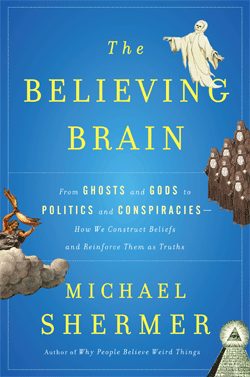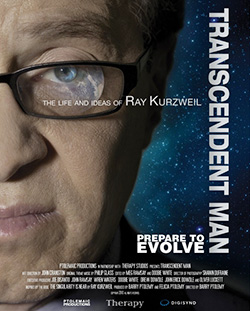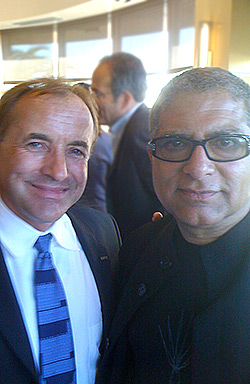Flowers for Nim
When I was in a psychology graduate program in the late 1970s, the nature v. nurture debate was in full-throated either-or mode, with crudely conceived experiments and data sets marshaled to defend one side or the other, as if asking whether π or r2 is more important in calculating the area of a circle. (Thankfully this debate today has morphed into much more sophisticated research by behavioral geneticists and others to understand how nature and nurture interact, well summarized in Steven Pinker’s The Blank Slate and Matt Ridley’s Nature via Nurture.) In addition to the studies examining twins separated at birth and raised in separate environments, I recall that raising chimpanzees in a human environment and trying to teach them sign language garnered considerable media attention as pioneering research into understanding the nature of human (and primate) nature, along with language and cognition. These were heady times of bold experimentation, the most prominent being Project Nim, initiated and monitored by Columbia University psychologist Herbert Terrace. Terrace in particular wanted to test MIT linguist Noam Chomsky’s then controversial theory that there is an inherited universal grammar that is the basis to language and unique to humans, by teaching our closest primate cousin American Sign Language (ASL). Terrace, however, did a turnabout, concluding that the signs Nim Chimpsky (a cheeky nod to Noam Chomsky) learned from his human companions and trainers amounted to little more than animal begging, more sophisticated perhaps than Skinner’s rats and pigeons pressing bars and pecking keys, but in principle not so different from what dogs and cats do to beg for food, be let outside, etc.—a “Clever Hans” effect in primates. His 1979 book, Nim, outlines the project and his assessment of its results. There have been many evaluations and critiques since that time, most recently by Elizabeth Hess in her 2008 book, Nim Chimpsky: The Chimp Who Would Be Human (Bantam Books), which is the basis of the new documentary film, Project Nim, by James Marsh (whose previous film, Man on Wire, is portrays the tightrope walker Philippe Petit).
Project Nim is a dramatic and disturbing critique of Terrace’s research and the treatment of Nim that also serves as something of an indictment of the entire enterprise of animal behavioral research. Having worked in an animal lab for two years training rats and pigeons in Skinner boxes, I was deeply moved by the perspective several decades have brought to what we were doing to animals back then in the name of science. There is, however, next to no science presented in this film, and perhaps that is the way it should be because how that data was collected was, by today’s standard, so sloppy as to be virtually worthless, or at the very least morally questionable.
It is with some irony that Nim spent the remainder of his post-experimental life at the Black Beauty Ranch in Texas, because Project Nim is, on one level, presented from his perspective, through the eyes (often tearing up) and voices (often cracking) of his trainers and handlers. Nim was ripped from the arms of his mother at only a few weeks old. As he was the seventh of her children to be so seized she had to be tranquilized and grabbed quickly so that she did not accidentally smother her baby that she clutched to her chest in motherly love and protection, as she collapsed on the floor. Stop right there. Five minutes into the film and I’m already wondering what science tells us about the effects on a mother of having her seven children stolen from her arms.
Marsh’s film shuttles between talking-head interviews with all the major players in the project (including Terrace himself) and original footage shot throughout the experiment. Nim began his childhood in an upper west side brownstone New York apartment surrounded by human siblings in the mildly dysfunctional LaFarge family spearheaded by Stephanie, who breast-fed Nim and, as he got older, allowed him to explore her nakedness even as he put himself between his adopted mother and her poet husband in an Oedipal scene right out of Freud. Just as Nim grew into his new family, surrounded by fun-loving human siblings and days filled with games and hugs, Terrace realized that scientists were not going to take him seriously because there was next to no science going on in this free-love home. (According to one of the trainers, there were no lab manuals, no diaries, no data sheets, no recordings of progress, and no one in the family even knew how to sign ASL!) So for a second time in his young life Nim was wrenched from his mother and placed into a more controlled environment in the form of a sprawling home owned by Columbia University. There a string of trainers carefully monitored Nim’s progress in learning ASL, making daily trips to a lab at the university where Terrace could control all intervening variables in a manner not dissimilar to a Skinner box. There some halting progress was made, but Nim was clearly not enamored at being shuttled back and forth between the Disneylandesque environment of home and the sterile environment of the lab, and it is unclear whether his lack of significant progress was the result of cognitive shortcomings or simian protest.
In due time Nim grew into his teenage years, and as most testosterone-fueled male primates are wont to do, he became more assertive, then aggressive, then potentially dangerous in his evolved propensity to test his fellow primates for hierarchical status in the social pecking order. The problem is that adult chimpanzees are 5-10 times stronger than humans. In other words, Nim became a threat. As one of the trainers said while pointing to a scar on her arm that required 37 stitches: “You can’t give human nurturing to an animal that could kill you.” After several of these biting incidents that sent trainers and handlers to the hospital, including one woman who had part of her cheek ripped open, Terrace pulled the plug on the experiment and therewith shipped Nim back to the research lab in Oklahoma from whence he came. Tranquilized into unconsciousness, Nim went to sleep surrounded by loving human caretakers on a sprawling estate in New York and awoke in a grey-bar cold steel cage in Oklahoma.
Having never seen another member of his species Nim was understandably anxious and scared at the sight of grunting, hooting male chimps eager to let the youngster know his place in the pecking order. I imagined that it must have been something like being tossed into a maximum-security prison with muscle-bound, tattoo-hardened murderers and rapists looking at you like fresh meat to be pounded on. As a result, Nim slipped into a deep depression, losing weight and refusing to eat. A year later Terrace visited Nim, who greeted him eagerly and expressed himself in a manner that Terrace himself described as signaling to get him out of this hell hole. Instead, Terrace took off the next day for home and Nim slid back into a depression. Some time later he was sold to a pharmaceutical animal-testing laboratory managed by New York University where Hepatitis B vaccinations were tested on our nearest primate relatives. Footage of a tranquilized chimp being pulled out of and stuffed back into a steel-barred cage barely big enough to turn around was sickening to watch. The emotional impact of the visual imagery left me to imagine what Nim would have signed to Professor Terrace had his vocabulary developed into fully human with the necessary colorful language for emotional expression appropriate for the situation: “Screw you Herb Terrace, you traitorous back-stabbing, low-life scumbag. You took me from my mother and my species. You robbed me of my simian childhood. You gave me a new mother then took her away from me just as I grew attached. You used me and abused me in the name of bogus science to further your own career, and when I protested you sold me off like so much raw meat. How about we put you into this hell-hole environment, lock you up behind bars, feed you crappy food, and make you sleep in your own piss and shit and see how you like it?”
In reality, no chimp has such verbal language, but violent incidents between chimps and humans and research on chimpanzees in the wild enables us to imagine what Nim would have done to Terrace given the opportunity and awareness of his ultimate responsibility for Nim’s fate: Nim would likely have torn off his face, ripped open his neck, eaten his genitals, and left him for dead in seconds. At least that is what this film evokes in emotional desire for revenge on Nim’s behalf. To be fair, the trainers and handlers come across as caring, loving people who did the best they could under the circumstances, but they had little say in the long-term course of Nim’s existence. Terrace, by contrast, who ran the show and called the shots, comes across as an almost psychopathic manipulator, an alpha male egotist who, in his own words on camera, spoke of Nim’s suffering in cold clinical language, saw absolutely nothing scientifically objectionable to employing mostly young nubile graduate students, most of whom he bedded during the research project then dispensed with before moving on to the next conquest. I realize that this was the free-love 1970s in which professors and students often conducted research between the sheets, but even by those standards Terrace appears to be the very embodiment of moral turpitude.
Momentarily, Terrace partially redeemed himself in my eyes when he admitted that the data he collected changed his mind on the nature-nurture debate—since Nim did not even remotely approach the complexity of language or cognition of humans, Chomsky was probably right. What a rare treat to hear a scientist say, “I was wrong.” But after thinking about it for a day I came to the conclusion that even this might have been nothing more than a way of reducing cognitive dissonance for how Nim’s life turned out. If Nim is human like, then the subhuman treatment of him becomes criminal. But if Nim is little more than a rat or pigeon, merely begging for food and favors like a lowly dog, then shipping him off to a research lab to live out his life in a cold steel cage perhaps doesn’t seem so deplorable. Sadly, there was no Shawshank redemption for Nim. But thanks to this film we can at least put flowers on his metaphorical grave.





